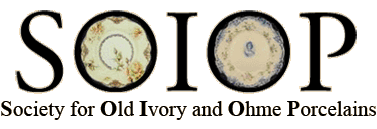The Oakland China Studio
May 11, 2020 by Jeffrey S. Habib, SOIOP member
A US Decorating Company Does Silver Right with Ohme

Silver and Black in Oakland
Recently several different email inquiries came into the SOIOP website asking about Ohme "Silverite" or attaching photographs of Ohme "Silverite" pieces.
Do an ebay search for "silverite" in the porcelain and glass category and you will find examples of Ohme silverite. Below are some Ohme Silverite pieces I purchased on ebay for this article.
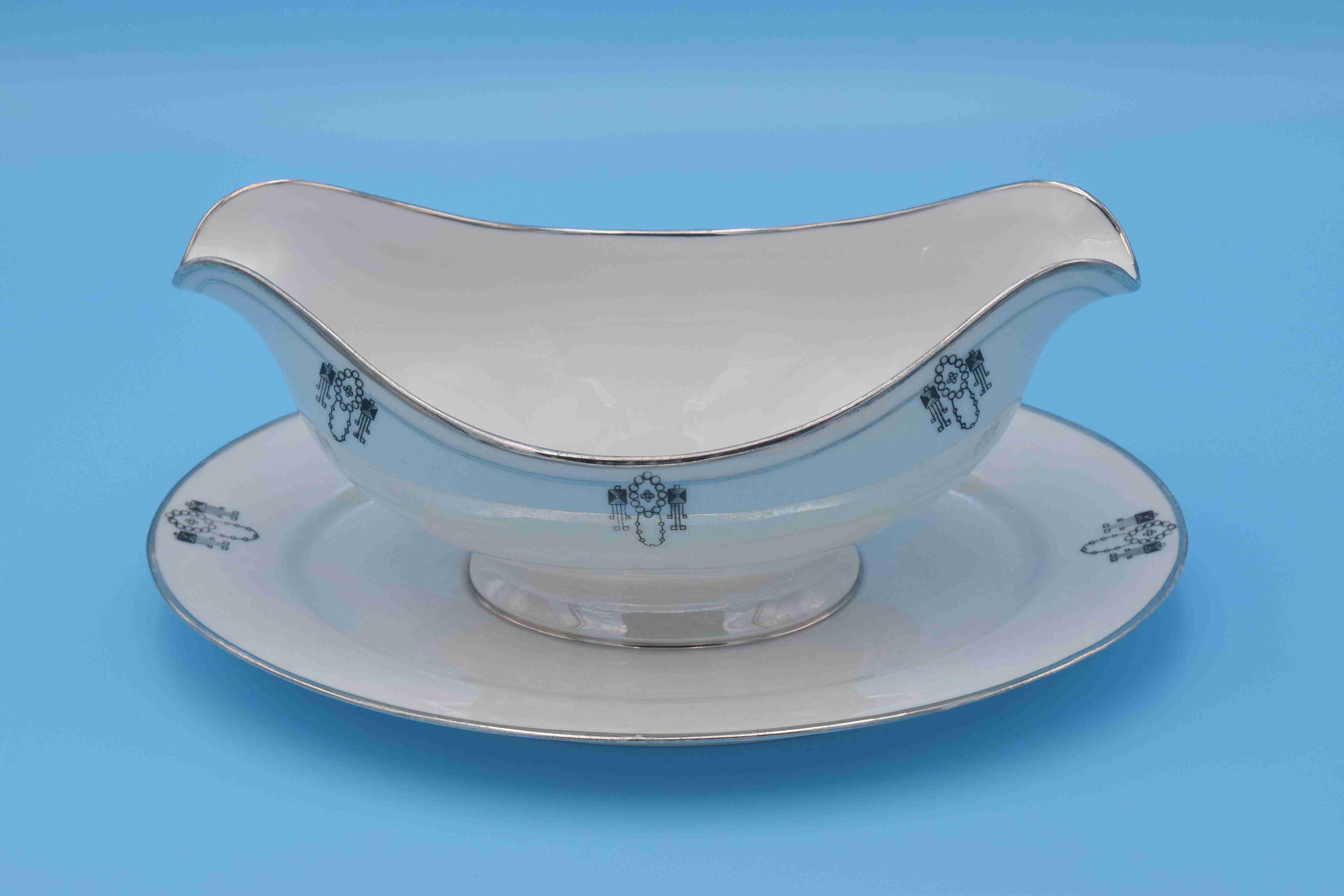
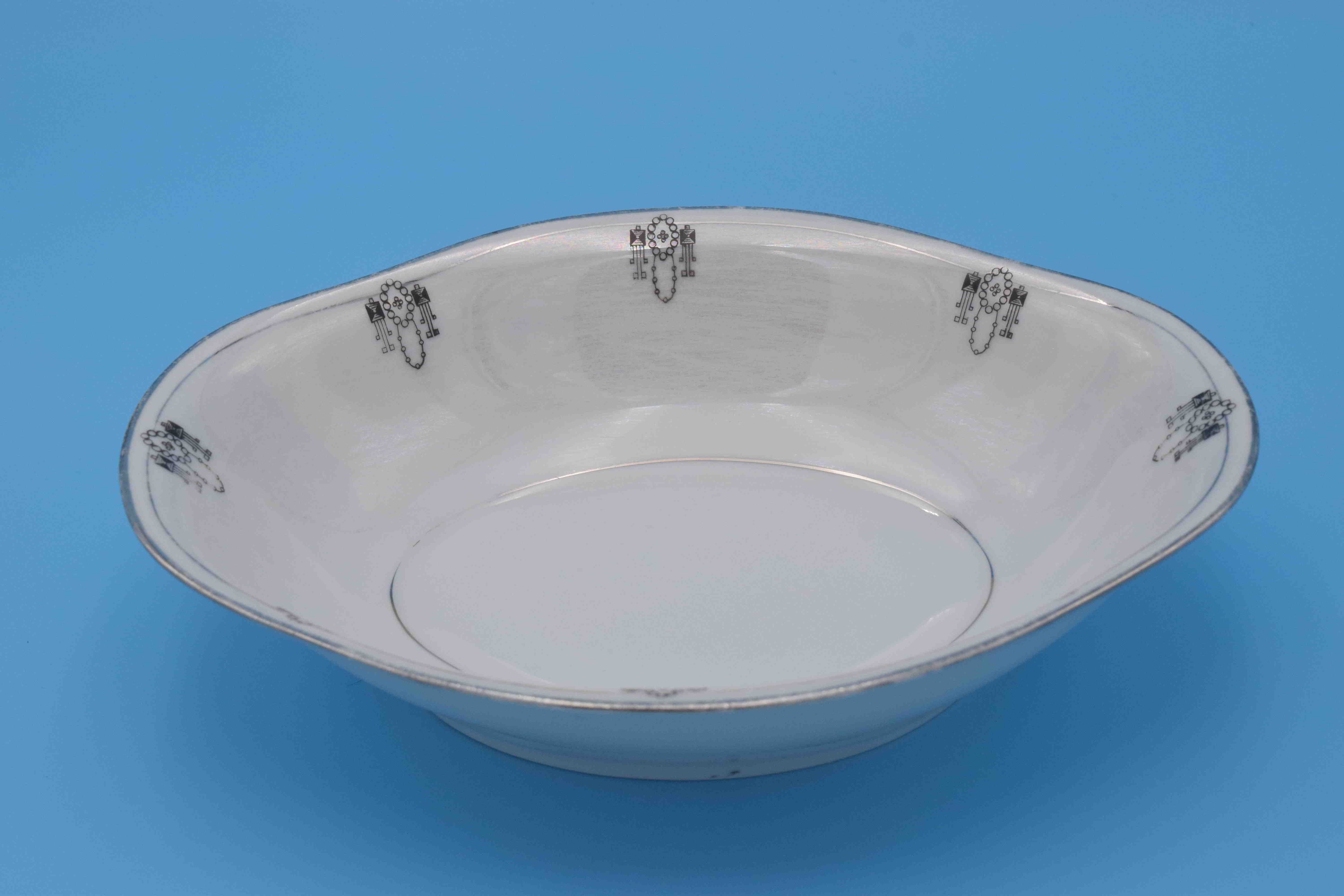
The term SILVERITE refers to a trademark owned by the US company Oakland China Studio, Inc. The company was located at 803-815 Foothill Boulevard, Oakland, California. The company is listed in R.L. Polk's 1928 Oakland City Directory as "Oakland China Studio (Richd Fuchs, Albt Gilbert, F G Ransom) china dec 811 Foothill blvd":
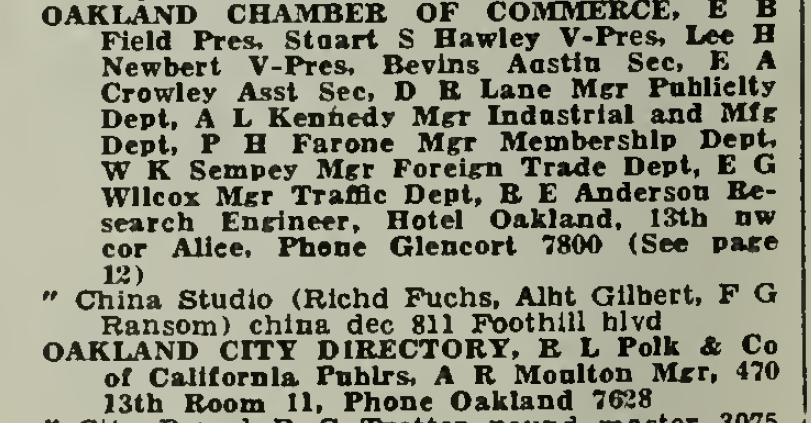
And here's a photograph from Google Earth showing the current building located at the 803-815 Foothill Blvd address.
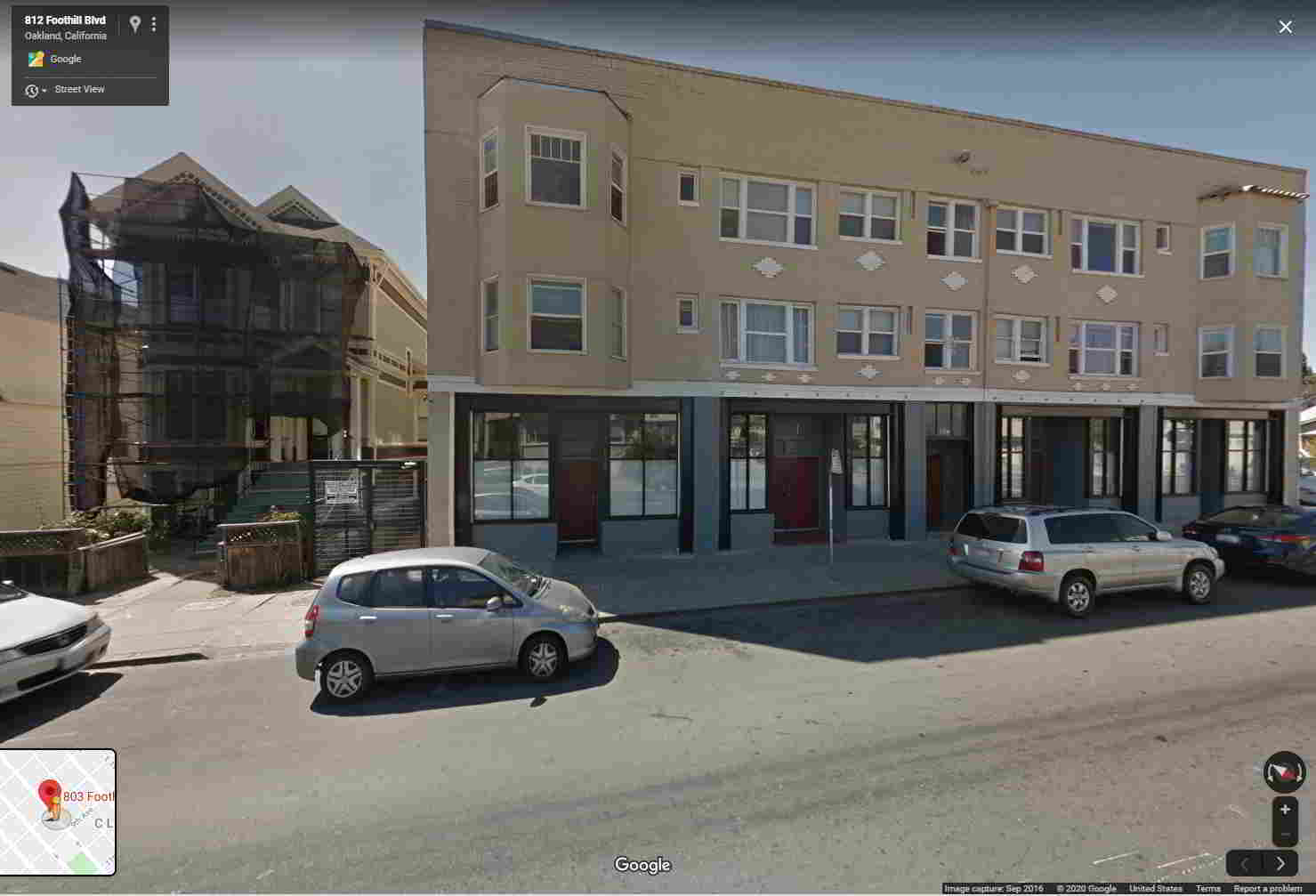
As indicated in the business listing, the company was a china decorating studio. Referring to the company's Oakland facility, a 1926 issue of The Jeweler's Circular states "this large plant, located in East Oakland, has a line which consists of over 230 designs in hand-painted china. Richard Fuchs, founder of the studio, invented and patented the Silverite China method, used to apply sterling silver [sic] to chinaware".
The Fuchs patent describes a unique method for decorating china patterns that is described in more detail below. In addition to decorating Ohme blanks, the company also decorated pieces from Rosenthal, Hutschenreuther and Tirschenreuth, Schumann, and others. I think I may have even seen Silverite-decoration Limoges. Pieces from different makers were seemingly often mixed together to make sets of china.
Richard Fuchs founded and first incorporated the business in Nevada in 1925. Mr. Fuchs was from Oakland and the company conducted its business in Oakland. I know the business was in existence into the 1970s, but I don't know when it finally closed.
Oakland China Studio received a federal trademark registration for SILVERITE in a stylized form on an application filed November 3, 1928:
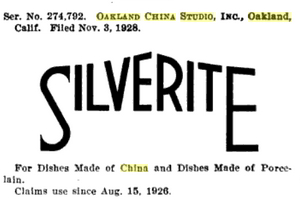
The SILVERITE trademark was commonly placed within a shield. The company's name was sometimes included as a separate trademark.
The federal trademark registration states the trademark is used "for dishes made of china and dishes made of porcelain". A nice thing about a federally registered trademark is that the registrant specifes the date of first use of the trademark - here, first use of SILVERITE was August 15, 1926.
So Ohme pieces marked SILVERITE were being decorated starting about 5 years or so before the closing of the Ohme factory. Ohme IRENE blanks were often decorated by the studio. Ohme's IRENE blank was introduced I believe well before World War I, indicating the IRENE blank was produced by the Ohme factory over a long time.
Mr. Fuchs received US Patent No. 1,593,869 on July 27, 1926 titled "Applying Design or Pattern to Chinaware." The patent discloses stamping a pattern on the china with an adhesive, applying powdered paint to the surface of the china to adhere the powdered paint to the adhesive, removing the excess paint from the china, and then firing the china. I am going to copy the description of how the pattern was made from the patent (feel free to skip!):
"In the preferred method of reducing to practice my invention, I take a plain piece of china, such as a saucer or plate, and first apply a coat of mother of pearl in a manner well-known in the art whereupon the dish is fired in a kiln at a temperature of about 2720° F. After the dish has cooled off again I proceed to apply the pattern. For this purpose, I secure a rubber stamp with the desired pattern. I then take lacquer and spread a small quantity thereof on a smooth plate, preferably of glass, and scrape the same back and forth with any handy tool, such as a putty knife, until a very thin film of the lacquer is formed on the plate. I then press a rubber stamp on the plate whereby the projecting outlines of the pattern are coated with the lacquer. The same is then impressed upon the china leaving on the latter a configuration corresponding to the pattern. This configuration is barely visible to the eye.
I now take a powdered paint which has been previously treated with a flux and scatter the same over the pattern on the china, wiping the powdered paint into the lacquer by means of a soft brush, a cloth, or cotton or the like. The pattern now shows up very distinctly and if the film of lacquer has been made sufficiently fine, the outline will be exceedingly clear and distinct in the minutest details. The china may now be wiped off to remove surplus of paint, whereupon it is fired in the manner previously described. The pattern thereby becomes a permanent part of the china."
So instead of applying transfer decals in a conventional manner, the pattern is stamped onto the china using a liquid adhesive, the powdered paint adheres to the adhesive, and the powdered paint is fired to adhere the paint pattern permanently to the china.
The Ohme pieces pictured above and what I've seen online are decorated in the COLONIAL pattern, shown below in close-up. Another common pattern is the GOTHIC pattern; I've seen (again online) Rosenthal pieces in this pattern but I don't recall seeing Ohme GOTHIC pieces.
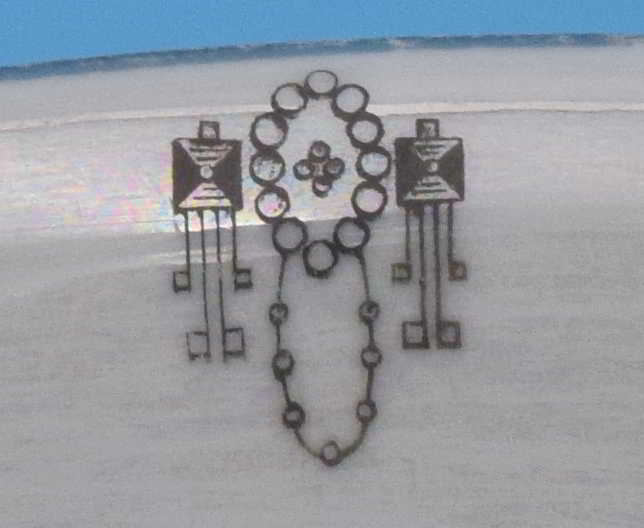
Also interesting is that a coat of mother of pearl is first applied to the porcelain. Look closely at the Colonial pattern above and you will see the colors from the mother of pearl finish. I've always associated Ohme Silverite as being in a pearlized finish and now I know it must have been a favorite of Mr. Fuchs - or perhaps helped to adhere the adhesive to the porcelain.
Oakland China Studio also became known for glass stemware and later changed its name to Oakland China and Glass Studio. I found an advertisement for Oakland Glass and China Studio stemware in an Oakland newspaper but now I can't find it (save interesting stuff right away!).
